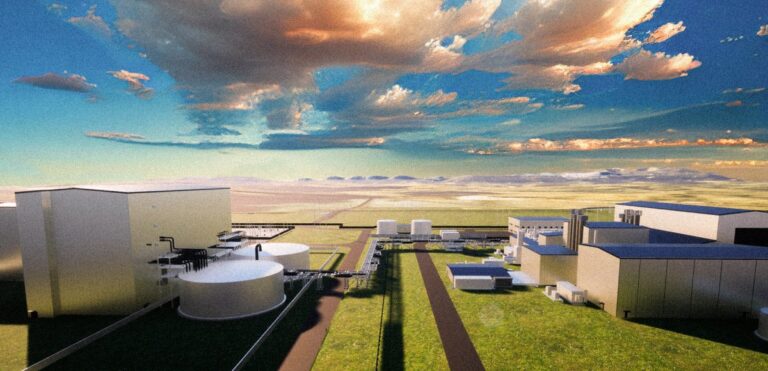Are you interested in contributing to scientific research while also exploring the beautiful city of Flagstaff, Arizona? Look no further than the Flagstaff Leafometer project! This unique citizen science project allows individuals to collect data on the changing colors of leaves in Flagstaff and contribute to a larger understanding of climate change and its effects on plant life. In this blog post, we will dive into the details of the Flagstaff Leafometer project, including what it is, how to participate, and the impact it has had on both the community and the scientific community.
What is a Leafometer?
A leafometer is a simple tool used to measure the color change of leaves over time. It consists of a clear plastic sheet with a grid pattern that is placed over a leaf. By aligning the grid lines with the veins of the leaf, one can easily determine the percentage of the leaf that has changed color. This data can then be recorded and analyzed to track the progression of fall colors in a specific area.
The concept of using a leafometer for scientific research was first introduced by Dr. George W. Cox, a professor at San Diego State University. He developed the tool as a way to involve citizens in collecting data on the changing colors of leaves, which could then be used to study the effects of climate change on plant life. The Flagstaff Leafometer project is just one example of how this tool has been utilized for citizen science.
How to Participate in the Flagstaff Leafometer Project

Participating in the Flagstaff Leafometer project is easy and accessible to anyone who is interested. The project runs from mid-September to mid-November each year, coinciding with the peak of fall colors in Flagstaff. Here are the steps to get involved:
Obtain a Leafometer
The first step is to obtain a leafometer. These can be purchased at local outdoor stores in Flagstaff or online. Alternatively, you can make your own by printing out a grid pattern on a clear plastic sheet.
Choose Your Location
Next, choose a location in Flagstaff where you will collect data. This can be in your backyard, a nearby park, or even on a hike. The important thing is to choose a spot that is easily accessible to you and where you can consistently return to throughout the fall season.
Collect Data
Once you have your leafometer and chosen your location, it’s time to start collecting data! Simply place the leafometer over a leaf and record the percentage of color change using the grid lines. Repeat this process for multiple leaves in your chosen location.
Submit Your Data
After you have collected your data, submit it to the Flagstaff Leafometer project website. This can be done through an online form or by mailing in your data sheets. Your data will then be added to the larger dataset and used for research purposes.
The Importance of Citizen Science
Citizen science projects like the Flagstaff Leafometer project are becoming increasingly popular as a way to involve the general public in scientific research. But why is citizen science so important?
Firstly, citizen science allows for a larger amount of data to be collected over a wider area. With the help of citizens, scientists can gather data from locations that may not have been possible otherwise. This leads to a more comprehensive understanding of a particular topic.
Secondly, citizen science promotes community engagement and education. By involving citizens in scientific research, they become more invested in the outcome and gain a better understanding of the topic being studied. This can lead to a greater appreciation for science and the natural world.
Lastly, citizen science projects often have a positive impact on the environment and local communities. In the case of the Flagstaff Leafometer project, the data collected can be used to track the effects of climate change on plant life and inform conservation efforts. Additionally, citizens who participate in the project may feel a sense of pride and ownership in their community, leading to a stronger sense of community involvement.
The History of the Flagstaff Leafometer Project
The Flagstaff Leafometer project was first started in 1993 by Dr. Cox and his students at San Diego State University. They chose Flagstaff as the location for the project due to its high elevation and diverse range of tree species, making it an ideal location to study the effects of climate change on fall colors.
Over the years, the project has gained popularity and has been featured in various media outlets, including National Geographic and The New York Times. It has also expanded to include other locations such as Colorado, Utah, and New England.
The Benefits of Participating in the Flagstaff Leafometer Project

Participating in the Flagstaff Leafometer project not only contributes to scientific research but also offers several benefits to those involved. Here are just a few:
- Get outside and explore: By participating in the project, you have the opportunity to get outside and explore the beautiful city of Flagstaff during the fall season.
- Learn about plant life and climate change: Through collecting data and submitting it to the project, you will gain a better understanding of how plant life is affected by climate change.
- Contribute to scientific research: Your data will be added to a larger dataset and used by scientists to study the effects of climate change on fall colors.
- Connect with the community: The Flagstaff Leafometer project brings together individuals from all walks of life who share a common interest in science and nature.
The Data Collected by the Flagstaff Leafometer Project

The data collected by the Flagstaff Leafometer project has been used in various research studies over the years. One notable study was published in the journal Global Change Biology in 2012. The study used data from the Flagstaff Leafometer project to track the timing of fall colors and how it has changed over the years due to climate change.
The data collected by the project has also been used to inform conservation efforts in the Flagstaff area. By understanding how climate change is affecting plant life, conservationists can better protect and preserve these species for future generations.
The Impact of the Flagstaff Leafometer Project
The impact of the Flagstaff Leafometer project extends beyond just scientific research. It has also had a positive impact on the community and individuals who have participated in the project.
One of the most significant impacts of the project is its ability to bring people together. Participants come from all different backgrounds and ages, but they share a common interest in science and nature. This creates a sense of community and connection among those involved.
The project has also helped to raise awareness about climate change and its effects on plant life. By involving citizens in collecting data, the project has made this complex issue more accessible and understandable to the general public.
The Future of the Flagstaff Leafometer Project
The Flagstaff Leafometer project shows no signs of slowing down. As climate change continues to be a pressing issue, the need for citizen science projects like this one will only increase. The project has also expanded to other locations, allowing for a larger dataset and a better understanding of how fall colors are changing across the country.
Additionally, the project has plans to incorporate new technology, such as a mobile app, to make data collection even easier and more accessible. This will allow for more individuals to participate and contribute to the project.
Additional Resources
If you’re interested in learning more about the Flagstaff Leafometer project or getting involved, here are some additional resources:
- Flagstaff Leafometer project website: https://www.leafometer.org/
- National Geographic article on the Flagstaff Leafometer project: https://www.nationalgeographic.com/science/phenomena/2012/10/01/the-leafometer-project/
- The New York Times article on the Flagstaff Leafometer project: https://www.nytimes.com/2008/11/06/garden/06garden.html
Conclusion
The Flagstaff Leafometer project is a unique and valuable citizen science project that allows individuals to contribute to scientific research while also exploring the beauty of Flagstaff. By participating in this project, you can make a difference in understanding the effects of climate change on plant life and connect with a community of like-minded individuals. So grab your leafometer and start collecting data today!
Also visit for more blogs at : socialnewstime.com




















+ There are no comments
Add yours